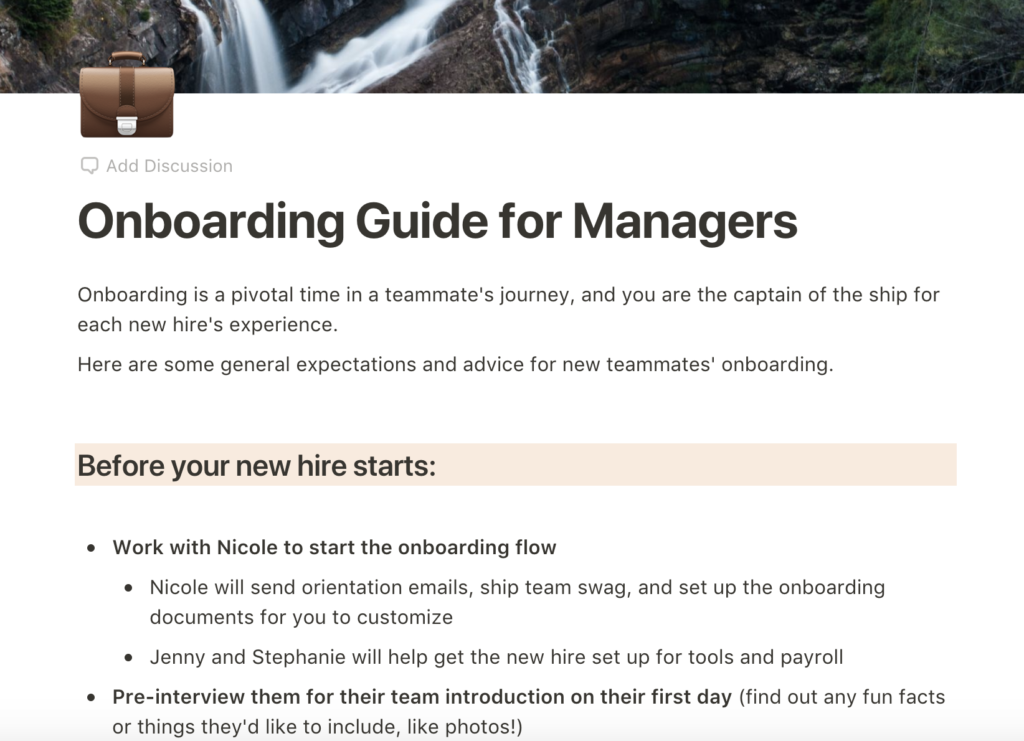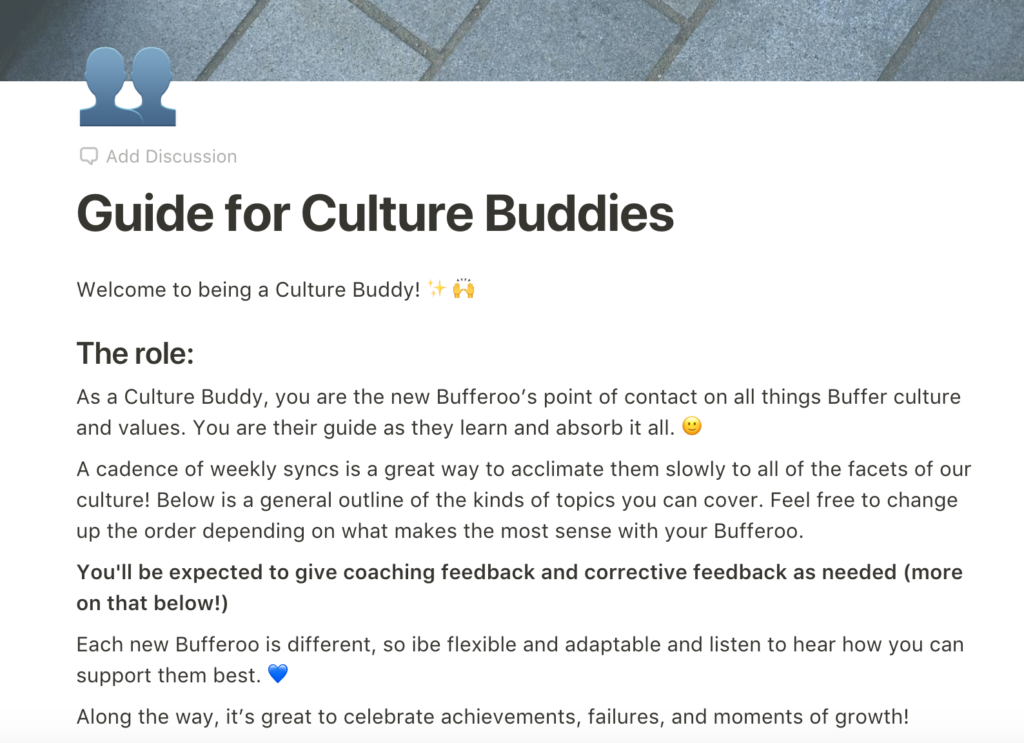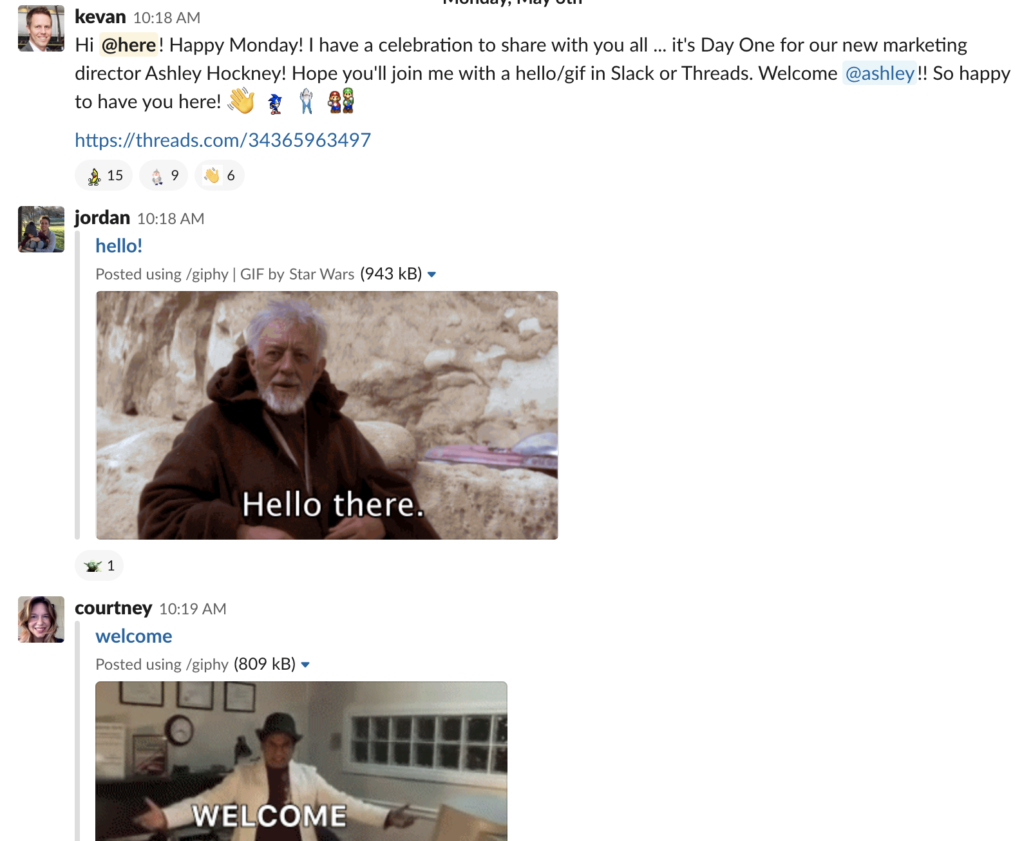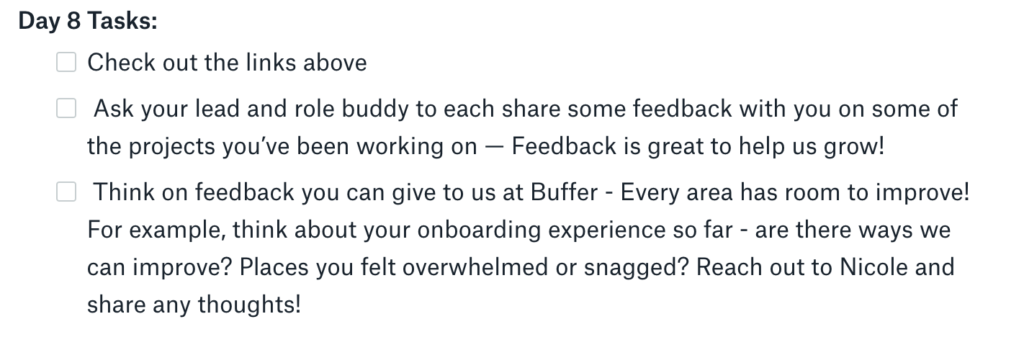
The Evolution of Onboarding at Buffer: How We Welcome New Teammates
Here’s a look at how we’ve evolved the process of onboarding teammates at Buffer -- what we've stopped, started, and are doing next.

Director of People @ Buffer
As an always-evolving company, Buffer has shared a lot of our successes and failures along the way — and we view each of these ups and downs as chances to learn and grow.
One area we’ve experimented with deeply in the past year has been onboarding – how we bring new teammates on board.
In this area especially, we’ve had some unique challenges and a lot of lessons. Here’s a look at how we’ve evolved the process of onboarding teammates at Buffer.
The history – and end – of boot camp
For many years, we operated with a 45-day “bootcamp” for new hires. New teammates came in as contractors and we didn’t offer our standard benefits, nor include these “boot campers” in our retreats, until after they passed their probationary period.
Although the bootcamp period was designed with good intentions – to give both parties a chance to evaluate one another and make sure it was a good fit – over time it began to feel off on a variety of levels.
It was stressful for new teammates to feel they were under a microscope, and that wasn’t what we wanted the Buffer journey to feel like. And it also presented our new teammates and our administrative team with additional hurdles and paperwork.
So we did away with the 45-day bootcamp period — but like anything deeply ingrained in a company culture, it took many months and specific efforts to remove the bootcamp mentality from the team.
Another less-than-ideal component of our onboarding experience during this time was that each team hired and onboarded their own new teammates, which meant new folks weren’t always receiving the same information. Benefits, processes and even cultural norms were all being communicated in different ways.
We needed an overhaul, and a unified way forward.
Unifying our onboarding process
It was time for our People team to take the reins. As we started pulling it all together, we realized just how much information there was to share — especially in a remote environment where you aren’t sitting directly across from the new person.
Here are just some of the items we documented and assigned owners:
- What equipment will new hires need? How will they get it?
- How will new hires get the logins for all necessary tools? Where will we track this info?
- How do we communicate expectations? Where do we document all shared cultural norms?
- How will new hires arrange and join meetings on their first day?
We put items into lists: checklists, Trello boards, Google Sheets, and more!
Here’s an early version of how we organized all these pieces:

Overcoming information overload
It’s not always just sharing what folks need to know — getting the timing right is equally important.
Remote onboarding in particular is a delicate timeline of tasks and syncs to convey all of the proper information.
On our first attempt, we simply overwhelmed new teammates by giving them a giant information dump, too soon and in an unorganized manner.
To course correct, we tried again and this time broke out the info into a series of communications and documents:
- Pre-start emails: A total of 5 timed emails, walking through:
- an ecstatic welcome!
- collecting basic info
- intro to managers and buddies
- an overview of remote tools we use
- what to expect on day one
- An onboarding form where we ask: name, address, contact info, payroll info, laptop needs, T-shirt sizes and more
- A central onboarding document where we store all important links and a day-by-day checklist of tasks and resources for each new hire to establish a solid foundation on the team.
This version works a lot better! It’s the one we’re still iterating on today.
We recently also experimented with an email drip campaign that sent out daily onboarding “tasks.”
While folks liked the reminder in their inbox each morning for the first few weeks, it eventually became white noise. Now we only ask people to go through their document and have buddies follow up to make sure key tasks are completed.
Meet our onboarding dream team
Depending on a company’s hiring demand and team size, the People team might be able to handle all of the direct communication and tasks of onboarding, but should they?
We believe that our current teammates are our greatest asset to help shepherd new folks into the team: they’ve been a newbie before, they’re excited and looking for opportunities to share, and the process provides an opportunity for servant leadership across the whole company.
We now rely on three key people to bring on new teammates: the hiring manager and two buddies.
Hiring Manager: This person is typically the new hire’s direct supervisor. They helps select the role buddy and coordinate the roadmap of 30-, 60- and 90-day goals. The manager also gives feedback and keeps connected with the buddies to pass along any vital information or corrections to the new hire.

Role Buddy: This person is typically a peer working on the same team as the new hire or a comparable role elsewhere in the company. Depending on how closely the role buddy and new hire work, they’ll talk once or twice a week via Zoom, and this buddy is the go-to person for any task or role-related question the new hire may have (generally asked via Slack or email).

Culture Buddy: This person is typically on a different team and selected to help guide the new hire through culture-related discussions and provide additional context on company history and norms. This buddy will chat weekly with the new hire for the first six weeks, and as needed thereafter.

We’ve experimented a lot with what each buddy covers and the expectations for each of these supportive roles.
In our latest evolution, we put a particular emphasis on our Culture Buddies knowing how to give both coaching (advice designed to help teammates grow and advance) and corrective feedback (which points out a needed change to make).
We now organize a periodic live chat with several Culture Buddies to talk about how to give peer feedback and how to discern between the various types of feedback.
What it’s like on Day One at Buffer
The first day is so incredibly pivotal, and we want it to be great for every new teammate!
But over the course of growing the team over the years, we’ve had more than a few slip-ups, like:
- Laptops arriving damaged
- Laptops arriving days after the start day
- Login emails expiring before the new hire could set up accounts
- No one online to welcome new hires
- New hires starting on a holiday for most or all of the team
Thankfully, part of our values is to view mistakes as a chance to learn and to have gratitude in all situations. Our new teammates have always been super gracious with all our stumbles.
And as a result, we’ve built out a flow that optimizes our chance for success with each new teammate! Now, we ensure we have:
- Login emails sent no more than two days before start
- A “what to expect on day one” email to prepare new hires
- Laptops sent well in advance
- Welcome swag packets sent well in advance
- A welcome announcement so the team can meet the new teammate
- Full document with 30-, 60-, and 90-day expectations and links
- A designated person to start a welcome party in Slack!

Of course, with our timezone spread, some folks start a full day before their manager ever logs in. There are times when this process still hits snags, but we learn and adjust our process each time.
Feedback goes both ways
Feedback is perhaps the cornerstone of a successful onboarding experience: knowing expectations and receiving the proper amount of direction to meet those standards.
We build feedback into the first 30, 60 and 90 days for new hires. After each 30-day period, the buddies and manager meet to discuss where the new hire has excelled and where feedback can be given to help set them up for long-term success. The manager will talk over these points with the teammate and celebrate all progress made.
And feedback goes both ways: We also ask new teammates to give us feedback periodically throughout their onboarding.

A beginner’s mind is a precious resource, and so many great changes and insights to Buffer overall have come from folks who were brand-new to Buffer.
After their first three months, we also send a survey to the new teammate to see how the onboarding experience went and where we can improve.
This has yielded tons of incredible improvements. Our philosophy is to never waste the fresh perspective we have in new hires – we seek all the feedback we can while the process is fresh on their minds!
Over to you!
Our onboarding process grows and changes as quickly as our team and tech does. New tools, new processes, new perspectives — every little bit makes us stronger, and we embrace each phase.
How does your organization bring on new folks? Have you experimented with the process at all? I’d love to hear your tips and thoughts in the comments!
Try Buffer for free
180,000+ creators, small businesses, and marketers use Buffer to grow their audiences every month.
Related Articles

We've been hosting Retreats at Buffer for 12+ years. In this article, we've detailed everything we've learned from 14 Retreats.

I recently attended my first in-person, international conference. Here's what I learned.

What it was like to join a fully remote team like Buffer, and how going on the company retreat so early on helped shape my journey in ways I hadn’t imagined.